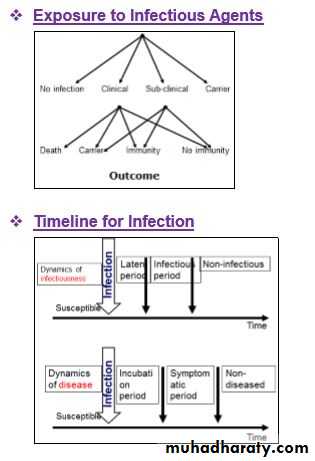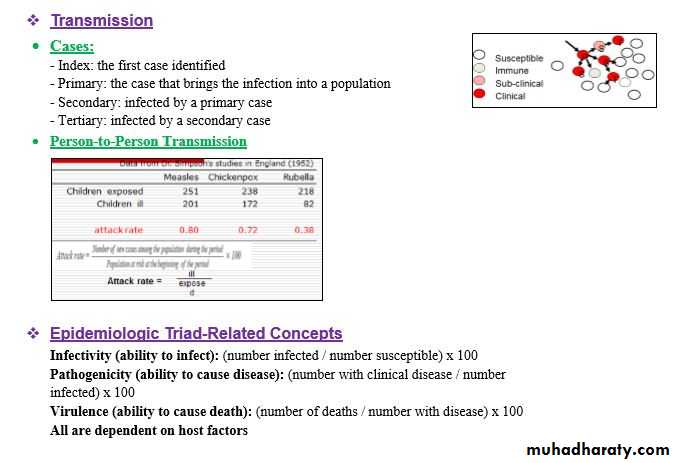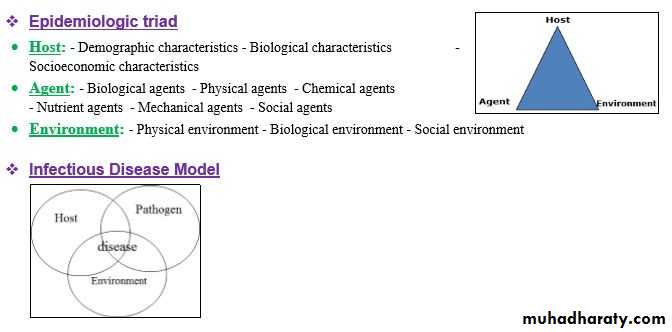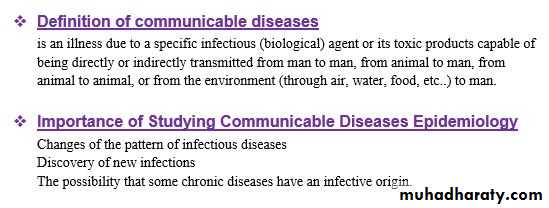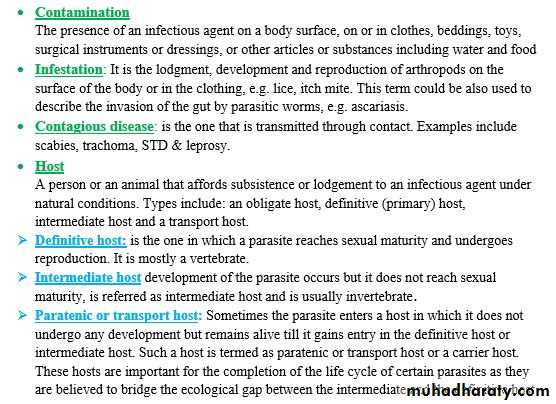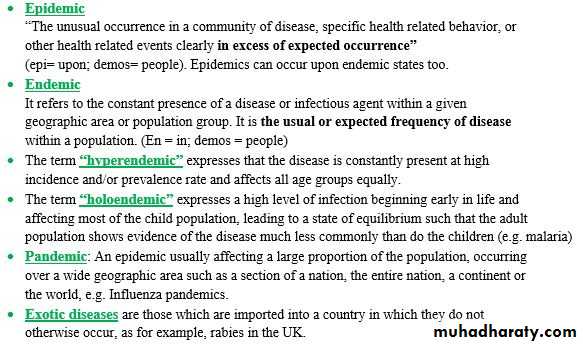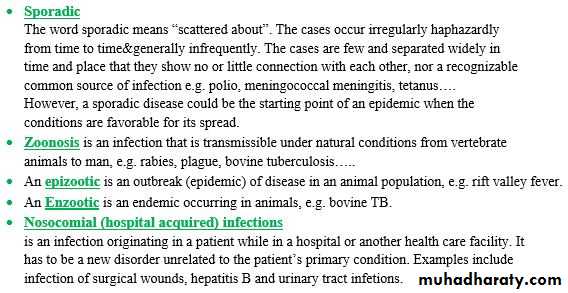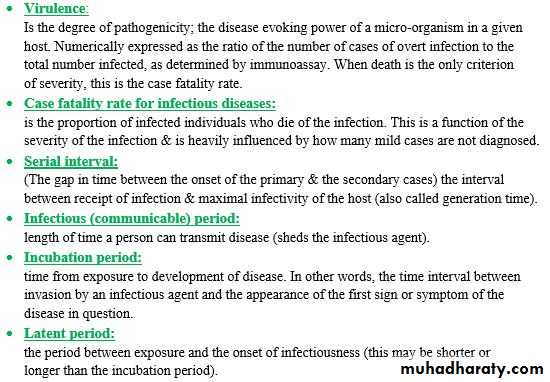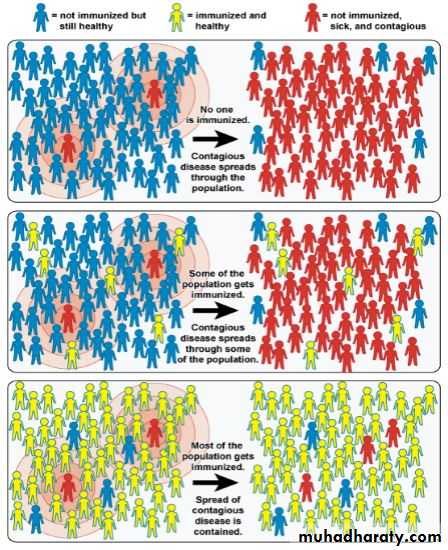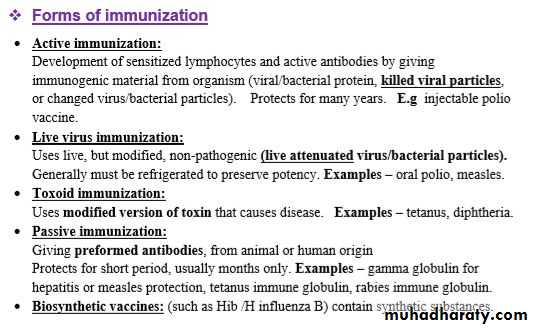Principles of Communicable Diseases Epidemiology
Lecture-2- 4th stageDept. of Family & Community medicine
By Dr. Muslim Nahi Saeed \Ph. D Family medicine
Tuesday, October 8th ,2019
-Definition of Epidemiology: is the study of the distribution and determinants of health-related states and events in populations, and the application of this study to control health problems.
-What is infectious disease epidemiology?
-Epidemiology: - Deals with one population. Identifies causes.
-Infectious disease epidemiology with 2 or more populations.
• Humans
• Infectious agents: Helminths, bacteria, fungi, protozoa, viruses.
• Vectors: - Mosquito (protozoa-malaria), snails (helminths-schistosomiasis) - Blackfly (microfilaria-onchocerciasis).
• Animals: - Dogs and sheep/goats: Echinococcus
- Mice and ticks: Borrelia
-A case is a risk factor: Infection in one person can be transmitted to others.
-The cause often known
Routes of transmission
1. Direct:- Skin-skin (Herpes type 1)
Mucous-mucous (STI)
Across placenta (toxoplasmosis)
Through breast milk (HIV)
- Sneeze-cough (Influenza)
2. Indirect:
Food-borne (Salmonella)
Water-borne (Hepatitis A)
Vector-borne (Malaria)
Air-borne (Chickenpox)
**Exposure: A relevant contact: depends on the agent - Skin, sexual intercourse, water contact, etc
Vector of infection
An insect or any living carrier that transports an infectious agent from an infected individual or its wastes to a susceptible individual or its food or immediate surroundings. Both biological and mechanical transmissions are encountered.Incidence of an infectious disease:
number of new cases in a given time period expressed as percent infected per year (cumulative incidence) or number per person time of observation (incidence density).Prevalence of an infectious disease:
number of cases at a given time expressed as a percent at a given time. Prevalence is a product of incidence x duration of disease, and is of little interest if an infectious disease is of short duration (i.e. measles), but may be of interest if an infect. disease is of long duration (i.e. chronic hepatitis B).
Opportunistic infection
This is infection by organisms that take the opportunity provided by a defect in host defense (e.g. immunity) to infect the host and thus cause disease. For example, opportunistic infections are very common in AIDS. Organisms include Herpes simplex, cytomegalovirus, M. tuberculosis….Reproductive rate of infection:
Potential for an infectious disease to spread.
Influential factors include:
*the probability of transmission between an infected and a susceptible individual;
* frequency of population contact;
*duration of infection;
* virulence of the organism
* population immune proportion .
Eradication and Elimination
Termination of all transmission of infection by the extermination ابادة of the infectious agent through surveillance and containment. Eradication is an absolute process, an “all or none” phenomenon, restricted to termination of infection from the whole world. The term elimination is sometimes used to describe eradication of a disease from a large geographic region. Disease which are amenable to elimination in the meantime are polio, measles and diphtheria.Surveillance
means to watch over with great attention, authority & often with suspicion. According to another, surveillance is defined as "the continuous scrutiny (inspection) of the factors that determine the occurrence and distribution of disease and other conditions of ill-health"Immunity:
Protection against a disease. There are two types of immunity, passive and active. Immunity is indicated by the presence of antibodies in the blood and can usually be determined with a laboratory test.Community Immunity ("Herd Immunity")
Vaccines can prevent outbreaks of disease and save lives. When a critical portion of a community is immunized against a contagious disease, most members of the community are protected against that disease because there is little opportunity for an outbreak.
Even those who are not eligible for certain vaccines—such as infants, pregnant women, or immunocompromised individuals—get some protection because the spread of contagious disease is contained. "

